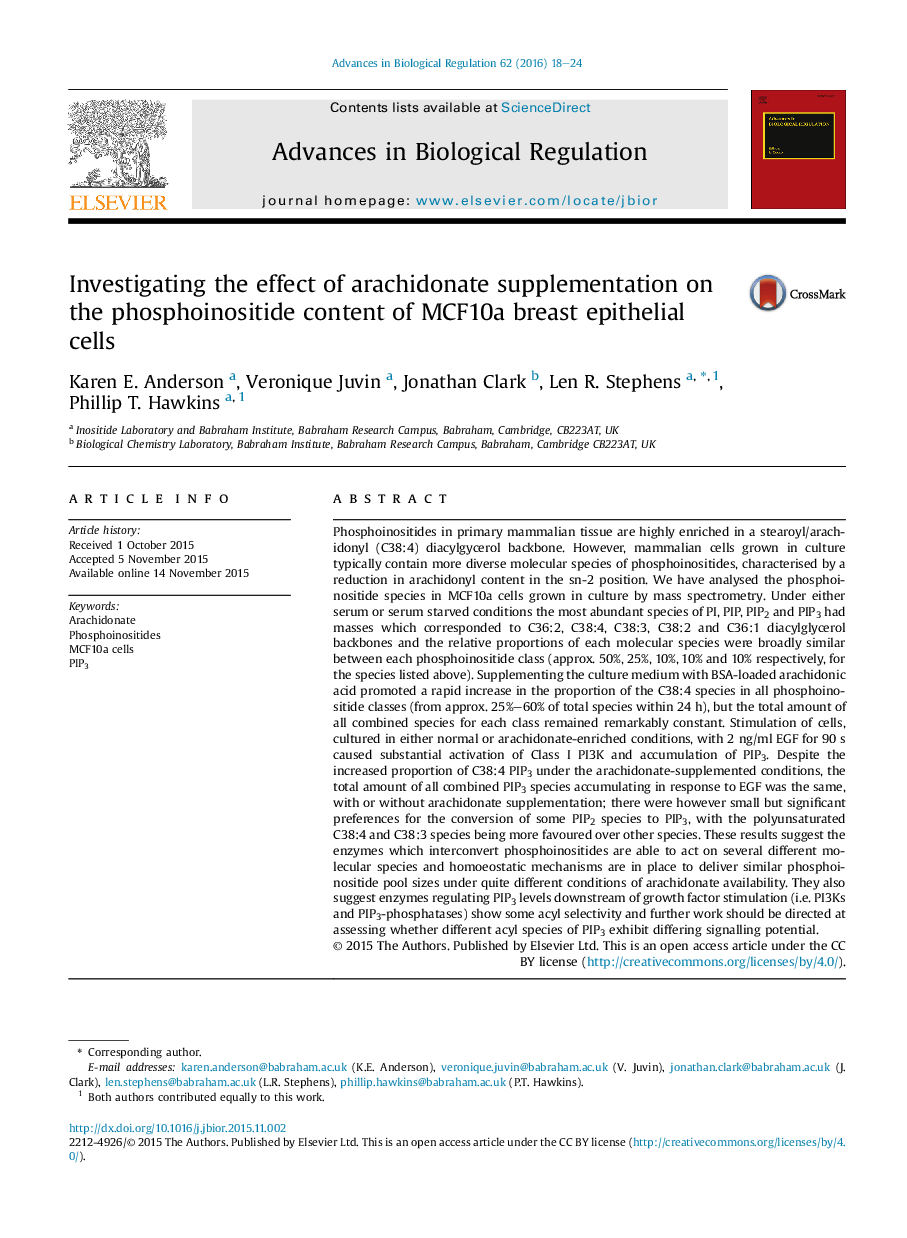| کد مقاله | کد نشریه | سال انتشار | مقاله انگلیسی | نسخه تمام متن |
|---|---|---|---|---|
| 5504228 | 1535869 | 2016 | 7 صفحه PDF | دانلود رایگان |

Phosphoinositides in primary mammalian tissue are highly enriched in a stearoyl/arachidonyl (C38:4) diacylgycerol backbone. However, mammalian cells grown in culture typically contain more diverse molecular species of phosphoinositides, characterised by a reduction in arachidonyl content in the sn-2 position. We have analysed the phosphoinositide species in MCF10a cells grown in culture by mass spectrometry. Under either serum or serum starved conditions the most abundant species of PI, PIP, PIP2 and PIP3 had masses which corresponded to C36:2, C38:4, C38:3, C38:2 and C36:1 diacylglycerol backbones and the relative proportions of each molecular species were broadly similar between each phosphoinositide class (approx. 50%, 25%, 10%, 10% and 10% respectively, for the species listed above). Supplementing the culture medium with BSA-loaded arachidonic acid promoted a rapid increase in the proportion of the C38:4 species in all phosphoinositide classes (from approx. 25%-60% of total species within 24Â h), but the total amount of all combined species for each class remained remarkably constant. Stimulation of cells, cultured in either normal or arachidonate-enriched conditions, with 2Â ng/ml EGF for 90Â s caused substantial activation of Class I PI3K and accumulation of PIP3. Despite the increased proportion of C38:4 PIP3 under the arachidonate-supplemented conditions, the total amount of all combined PIP3 species accumulating in response to EGF was the same, with or without arachidonate supplementation; there were however small but significant preferences for the conversion of some PIP2 species to PIP3, with the polyunsaturated C38:4 and C38:3 species being more favoured over other species. These results suggest the enzymes which interconvert phosphoinositides are able to act on several different molecular species and homoeostatic mechanisms are in place to deliver similar phosphoinositide pool sizes under quite different conditions of arachidonate availability. They also suggest enzymes regulating PIP3 levels downstream of growth factor stimulation (i.e. PI3Ks and PIP3-phosphatases) show some acyl selectivity and further work should be directed at assessing whether different acyl species of PIP3 exhibit differing signalling potential.
Journal: Advances in Biological Regulation - Volume 62, September 2016, Pages 18-24